Updated: November 6, 2024- 10 min read
Nothing ever worth doing is easy. That’s especially true when it comes to getting the job you’ve been dreaming of.
Product Management is a very hot role right now, as it was listed as the #4 best job in America earlier this year. It’s the perfect blend of technical knowhow, creativity, and leadership, making it perfect for those who want to build great products without necessarily having a CS degree or coding expertise.
Unfortunately, this means that the recruitment landscape for product is highly competitive. This means that lots of highly qualified people are going for a small pocket of jobs, and companies can afford to be picky about who they hire, making it hard to break into Product Management.
If you’ve been struggling to land that interview, or get through to the next stage, you’re not alone. Getting a job in Product Management is challenging! But once you’ve understood why, you can come up with an action plan to help you get your foot in the door!
Problem 1: The Gray Area of Product
Product Management is not as cut-and-dry as some other roles, which have very clear paths. If you want to be a doctor, you go to medical school. If you want to be a great painter, you buy an easel and enroll in some classes.
However, Product Management is not so easy to define.
Product Management is typically referred to as the intersection of business, technology, and user experience. It doesn’t hurt if you also know a bit about Product Marketing. And maybe a few coding skills. Being a good public speaker and the ability to lead teams is also a huge plus. So as you can see it’s a multi-dimensional role!
That’s also true for the hiring managers who are tasked with finding the next Product Manager for their company. It’s hard to write a specific list of requirements, as Product Managers come in all shapes and sizes.
A candidate with a degree in computer science who spent the last year as a UX designer, might be just as qualified for a role as a front-end developer with a background in finance.
There are also a lot of very specific methodologies.
How to get around it: The best way to make yourself hireable is to diversify! It’s much better to have a little bit of experience and knowledge in a lot of things than be deeply experienced in only one thing.
If you have a variety of skills – there is a job out there for you in Product.
Solution: Read Between the Lines
Try to see beyond the bad wording of the job title. If it’s a reputable company, with a large product team, there should be information online about how they do product. Interviews with the VP of Product, AMAs their Product Managers have done…all of these will shed light on their practices.
Don’t get hung up on the specifics. If there’s one thing in the job description that you don’t know how to do, apply anyway and learn it on the job.
Problem 2: The Recruitment Process
There’s a standard recruitment process across tech, that anyone who is job hunting will be painfully familiar with. It starts off with a screening interview with a recruiter – someone who has been briefed on the job that they’re hiring for, but without an in-depth understanding.
Make it through the screening interview and you’ll get another phone/zoom interview with someone from the product team. Depending on the size of the company, you’ll go through various online interviews with a variety of potential future colleagues and management.
Then you’ll make it to the onsite interview. For companies like Google and Apple this will probably involve a full day of group interviews and one-to-ones. There may also be some homework tasks along the way.
Just going through this process once can be intense and stressful, which is not something that is discussed enough in the tech world. Doing it three times, or four, or however many it may take to land that job takes a toll on your motivation to keep applying.
Trying to keep attending interviews without arousing the suspicion of your current bosses is also a delicate balancing act! Using all of your PTO to attend interviews for jobs you don’t get is certainly a bitter pill to swallow!
Solution: Change up your process
You can’t change the application process yourself, it’s a problem that the tech industry has to solve together. But you are in complete control of your process.
If you’ve been going for BIG jobs at Google, Apple, Microsoft, etc, and keep finding yourself rejected at the last hurdle, you can do one of two things.
You can scale back the size of the company. It might be that you don’t have the level of experience that these big companies are looking for, or you’re nervous in the interviews because of the prestige of the job. Go for more achievable jobs which will both be more attainable, and also have a less stressful application process!
Get networking. In Silicon Valley, who you know is just as important as what you know.
Problem 3: The Educational Gap
What happens to many people time and time again, is that they spend years at a traditional college or university, and come out with traditional skills like computer science, finance, and marketing.
These are a great starting points, but unfortunately, as you walk side by side with your fellow classmates on graduation day, you’ve all been equipped with the same skills. And Product Management is not a traditional job, as we’ve mentioned above.
While a few universities may touch on Product Management in class – there are no dedicated courses. Product Management certifications can be taken outside of formal education, before, during, or after your studies.
Anyone who wants to be a Product Manager has to take their own initiative and learn the necessary skills in their own time. Or, organically, by taking a variety of different positions. A few years in UX, one in marketing, a quick coding course…the path can be long and winding!
The community answers: “why is it so hard to become a Product Manager?!”
The community that struggles together, grows together! So we asked our community the following question, to get to the root of the problem:

We got a variety of responses, showing that there really is no one true reason why getting a job can be a struggle. It also shows that you’re not alone in your job hunt!
“Leaving the devil you know for the devil you don’t.”
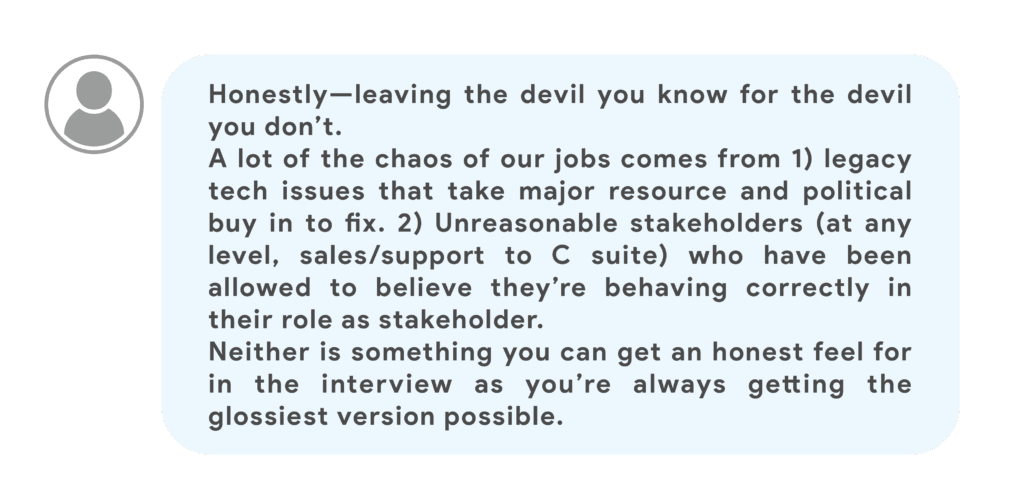
This is a huge factor! There are a lot of unknowns in product, and nothing is a guarantee.
“PM job postings that aren’t PM.”

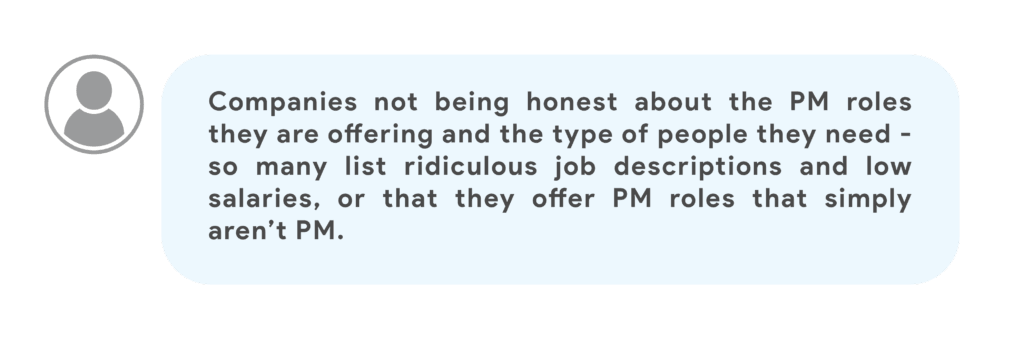
This problem stems from recruiters sometimes not being fully trained on the type of roles they are hiring for. It make it difficult for aspiring PMs to find their fit and understand how well a role is suited for them, if they’re not given details.
It’s hard to show off your knowledge at the initial screening stage, and get a feel for the inner workings of the product team, when the interviewer also isn’t clear on the details.
Some companies who are late to the party and are only just now introducing a Product Manager to their team, might not be entirely sure what it is they’re looking for. This can lead to confusing job postings.
The issue could also be with your resume. When you ship a product, you don’t just create one perfect version, send it out into the world, and then wash your hands of it. Of course not. You iterate! If you find that something isn’t working, go back over your resume and see what changes you could make.
“You need experience to get experience.”
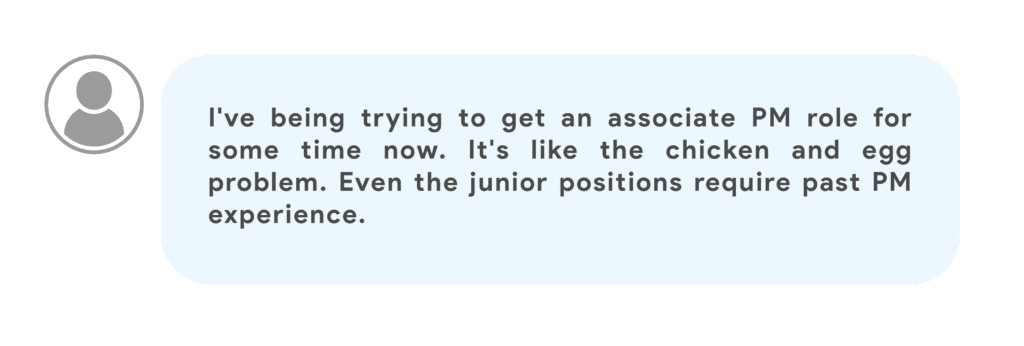
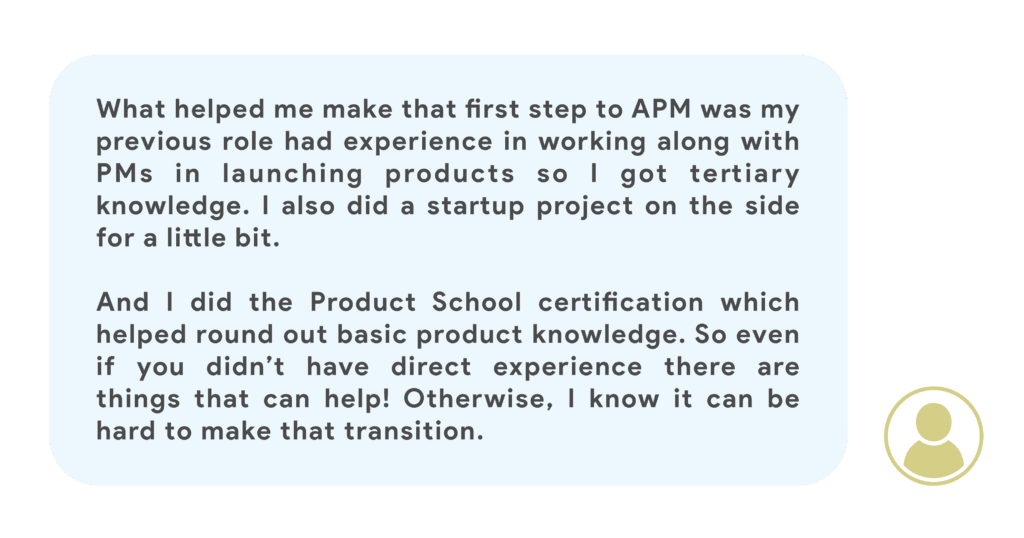
Someone solved this problem for us! No one is going to give you experience, you have to go out there and get it yourself!
“People don’t know how to look for jobs.”
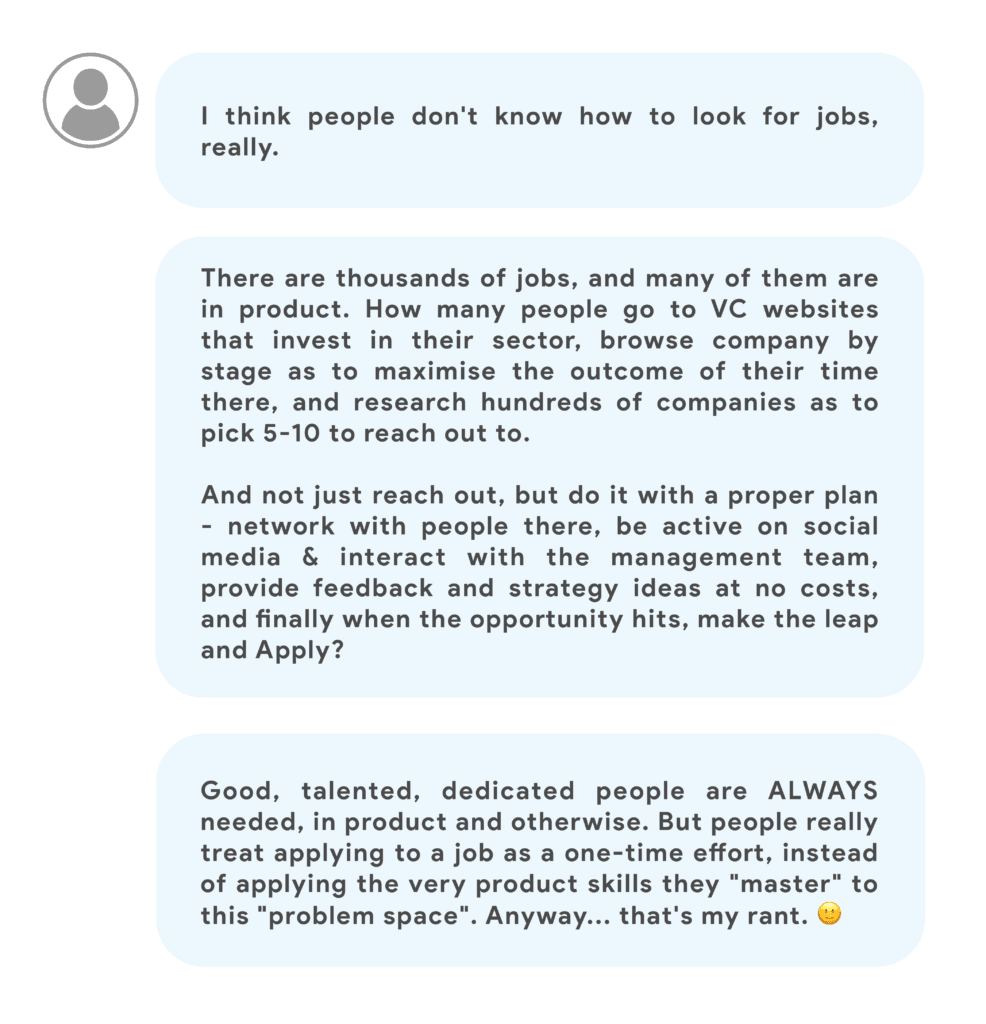
Even rants hold grains of truth! Hunting for a job isn’t a one-time event. It’s a process that will last your entire career, even at times when you’re settled into a role: you’ve got to keep an eye on the future.
The truth is that you’ve got to be smart about your job hunt. It’s not as simple as creating one version of your resume and sending it off to every major company on LinkedIn.
Networking will and interacting with the wider product community will help you to build the relationships which are absolutely key to your career.
“Proving that you have the skills.”
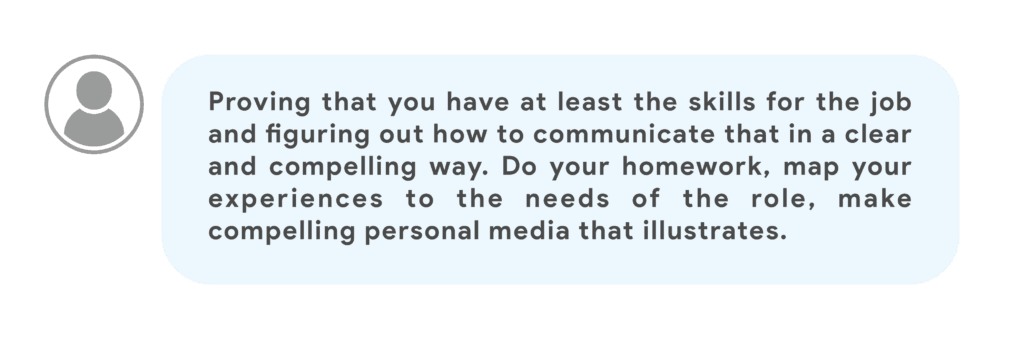
Treat yourself like a product. Sell your story, explain your ‘Why’, and take any opportunity to show who you are and what you can do.
Is there hope for aspiring Product Managers?!
Yes! Absolutely!
Like we said at the start – nothing that’s worth doing is easy! All it takes is some careful planning, and a bit of grit. Your Product Management job is waiting for you, but it’s not going to hand itself to you on a silver platter. You need to go after it yourself.
Free Product Management resources
First of all, there are a plethora of Product Management resources out there to help you gain Product skills and knowledge.
If you’re just starting out, we recommend:
The Product Book – The ultimate guide to all things Product Management
The Product Podcast – Interviews and talks with some of the best Product people in the world
Ship It – A book with new and updated talks from top Product Managers working at Netflix, Google, Facebook, and more.
Secondly, getting a certification will help you consolidate your knowledge, and give you tangible proof that you have what it takes to be a Product Manager.
Our Product Management certifications are taught by real Product Managers from Google, N26, Amazon, Apple, and more world-class companies. They have the jobs you want, and can teach you what they know.
You can also get involved in your local product community by checking out events and networking opportunities.
Expert talks from Product experts
We’ve also uploaded all of our talks to YouTube, and we’ve handpicked a few which are particularly helpful to those stuck in the job-hunting stage:
What I Look for When I Hire a Product Manager By Airbnb Product Lead
How to Nail the Product Manager Interview by Gayle McDowell
How to Shine in a Product Manager Interview by former Facebook PM
Conferences Product Managers go to
Don’t forget, you can learn from experts and network with the people you want to be at #ProductCon, the last Product Management conference. If you’re near London, New York, Los Angeles, Seattle, or San Francisco, attend the conference in person and rub shoulders with the best.
You can also sign up for the livestream if you’re further afield, and enjoy all the learnings of the day for free.
Updated: November 6, 2024





